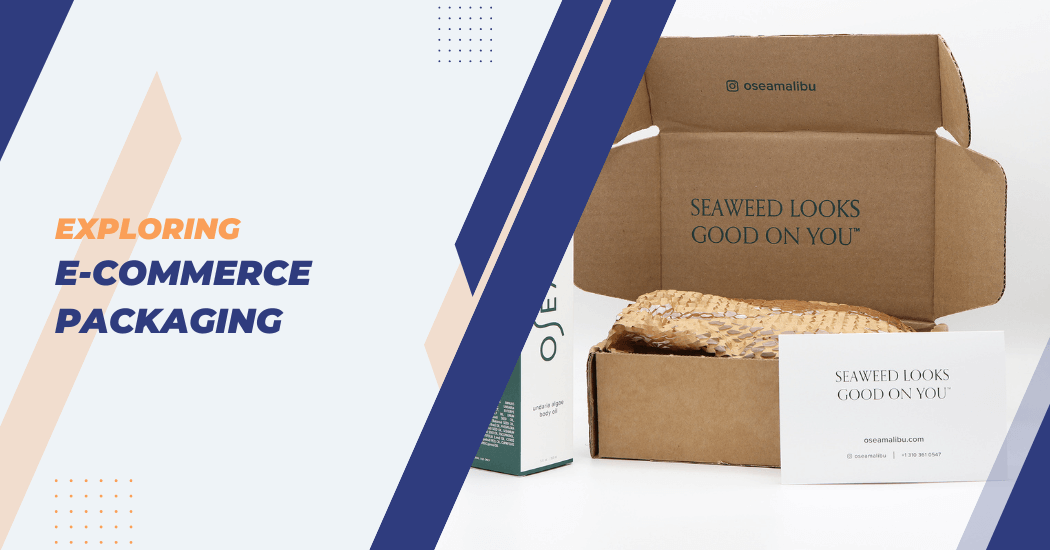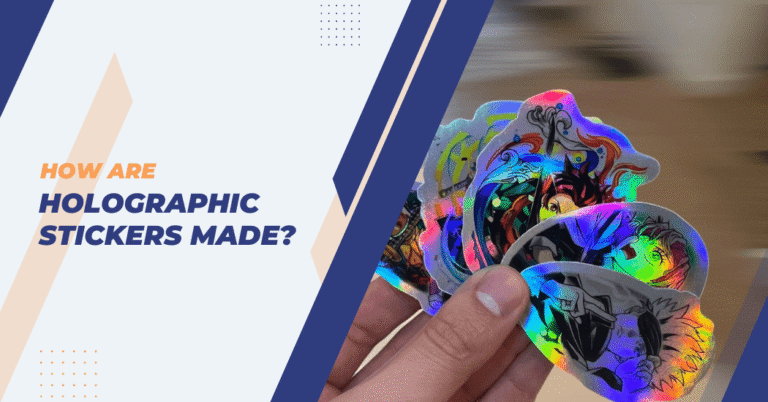What is e-commerce packaging?
E-commerce packaging refers to the materials and methods used to wrap or protect goods sold through online platforms before they are shipped to consumers.
It plays a critical role in not only safeguarding the product during transit but also providing an opportunity for brands to make a first impression, enhance customer experience and embody sustainable practices.
In this blog post, we will delve deeper into what e-commerce packaging is, its purpose and the various aspects to consider when designing and implementing it for your business.
Through understanding e-commerce packaging, businesses can make informed decisions that align with their brand values and customer needs.
E-Commerce Packaging
E-commerce packaging, also known as online packaging or internet retailing packaging, is the process of designing and producing materials used to protect products sold through online platforms. It involves the use of various materials such as cardboard boxes, wrapping paper, air pillows, tape and labels to ensure safe delivery of goods to consumers.
In addition to protecting during transit, e-commerce packaging also serves as a marketing tool for brands. It is often the first physical interaction that a customer has with a brand, making it an important factor in shaping their perception and experience.
As more customers shift towards online shopping, e-commerce packaging has become an integral part of the overall customer experience and can greatly influence purchasing decisions.
Common uses of e-commerce packaging
E-commerce packaging fulfills several vital functions beyond simply protecting the item during transit.
Its common uses include:
- Product protection: The primary purpose of e-commerce packaging is to safeguard the product from potential damage during shipping and handling. This is particularly important for fragile items that require extra care.
- Brand presentation: Packaging offers a unique opportunity for brands to make a memorable first impression. Customized and well-designed packaging can enhance brand recognition and loyalty.
- Marketing and promotion: E-commerce packaging can be used as a marketing tool to communicate with customers. Including promotional materials or personalized messages can enhance customer engagement.
- Sustainability: Increasingly, e-commerce packaging is being designed with sustainability in mind. Using eco-friendly materials and designs reduces environmental impact and meets the growing consumer demand for sustainable practices.
- Customer convenience: Features such as easy-open packages and resealable bags add value by improving the customer’s unboxing experience, making it more convenient and enjoyable.
Types of E-commerce packaging materials
Choosing the right types of e-commerce packaging materials is pivotal in ensuring not only the safety of the products but also in making an environmental and branding statement.
Here’s a closer look at some commonly used materials:
- Cardboard boxes: The most widely used packaging material due to its versatility, durability and recyclability. They can be customized in various sizes and printed with brand logos or designs to enhance customer experience.
- Bubble wrap and air pillows: Ideal for protecting fragile items, these materials provide cushioning and reduce movement inside the packaging, minimizing the risk of damage during transit.
- Biodegradable packing peanuts: An eco-friendly alternative to traditional foam peanuts, these are made from organic materials like cornstarch and dissolve in water, leaving no toxic waste.
- Padded envelopes: Suitable for small, durable items, padded envelopes offer protection against scratches and minor impacts. They take up less space than boxes and can reduce shipping costs.
- Mailer boxes: Smaller than shipping boxes, mailer boxes are strong, lightweight and often used for subscription boxes or products that require minimal protection. They present an excellent branding opportunity as they can be fully customized with designs that stand out.
- Labels: Labels are used to identify the product, include important information such as tracking numbers and contact details and can also serve as an additional branding tool. Labels can be customized to include the brand’s logo and design, making them an effective marketing tool.
Best practices for designing e-commerce packaging
When designing e-commerce packaging, it is important to consider both the functional and aesthetic aspects.
Here are some best practices to keep in mind:
- Keep it simple: E-commerce packaging should be easy to open and dispose of, so customers can easily access their products. Avoid using excessive layers or materials that make it difficult for customers to reach the product.
- Incorporate branding: E-commerce packaging provides a great opportunity to showcase your brand’s personality and values. Use PMS colors, logos and designs that align with your brand identity to create a cohesive and memorable experience for customers.
- Choose sustainable materials: In today’s environmentally conscious world, eco-friendly packaging can make a positive impact on both customers and the environment. Consider using recyclable and biodegradable materials and minimize the use of plastic as much as possible.
- Consider the size: E-commerce packaging should be just the right size for the product to avoid excess space, which can result in increased shipping costs and environmental waste.
- Ensure durability: Packaging should be able to withstand the rigors of shipping and handling. Use high-quality materials and conduct tests to ensure that the packaging can protect the product during transit.
- Include important information: Labels and inserts are a great way to include important information like handling instructions, return policies and contact details. This helps create a positive customer experience and can also save time for customer service teams.
Design considerations for e-commerce packaging
In addition to the best practices mentioned above, certain design considerations are unique to e-commerce packaging. These include:
- Product visibility: Unlike traditional retail packaging, e-commerce packaging doesn’t have the advantage of being placed on a shelf for customers to see and touch. Therefore, it is important to provide some form of product visibility through window cutouts or clear packaging. This allows customers to see the product and can help build trust and credibility.
- Design for transportation: E-commerce packages often go through various stages of transportation, including sorting, loading, unloading and handling by different carriers. Therefore, it is important to design packaging that can withstand these processes without damaging the product or compromising its safety.
- Unboxing experience: With the rise of unboxing videos on social media platforms, businesses are now paying more attention to creating a memorable unboxing experience for customers. This can include unique packaging designs, personalized notes or gifts and interactive elements such as QR codes or augmented reality.
- Sustainability: As mentioned earlier, using sustainable materials is becoming increasingly important for e-commerce packaging. However, businesses can also take sustainability a step further by designing packaging that has a secondary use. For example, using boxes that can be repurposed as storage containers or shipping materials for returns. This not only reduces waste but also adds value to the customer experience.
Tips for buying effective e-commerce packaging
As an e-commerce business owner, choosing the right packaging materials can be overwhelming with many options.
Here are some tips to help you make the best decision:
- Understand your product: Before buying packaging, it is important to understand your product’s size, weight and fragility. This will help you determine the packaging material required for safe transportation.
- Consider your budget: While it is important to invest in high-quality packaging, it is also essential to consider your budget. Look for cost-effective options that still meet your product’s needs and provide a positive customer experience.
- Research materials: With the increasing demand for sustainable packaging, many eco-friendly options are now available in the market. Do some research and choose materials that align with your brand values and are suitable for your product.
- Order samples: Before committing to a large order, it is advisable to order samples from different suppliers to test the quality and durability of the packaging. This can also help you make an informed decision on the design and branding elements.
- Partner with a trusted supplier: Finding a reliable supplier is crucial for e-commerce businesses. Look for a supplier who can provide customized packaging solutions, prompt delivery and good customer service.
FAQs – ECommerce Packaging
How does e-commerce packaging impact sustainability?
E-commerce packaging can significantly impact sustainability by adopting eco-friendly materials, minimizing waste and optimizing packaging size. Sustainable practices contribute to reducing the environmental footprint of online retail.
How can businesses balance cost-effectiveness with environmentally friendly packaging?
Businesses can achieve a balance by exploring cost-effective sustainable materials, optimizing packaging design to reduce waste and adopting efficient supply chain practices. Investing in sustainable packaging often aligns with long-term cost savings.
What challenges do businesses face in e-commerce packaging?
Challenges include finding the right balance between protection and eco-friendliness, complying with regulations, managing packaging waste and keeping up with evolving consumer preferences and sustainability expectations.
Are there regulations governing e-commerce packaging?
Regulations vary by region but there are often guidelines related to packaging materials, labeling and environmental impact. Businesses should be aware of and comply with these regulations to avoid legal issues.
How can businesses optimize their e-commerce packaging strategy?
Optimizing e-commerce packaging involves regularly reviewing and refining materials, designs and processes. Conducting regular assessments of customer feedback, industry trends and sustainability goals can help businesses stay competitive in the market.
Final Thoughts
E-commerce packaging plays a crucial role in creating a positive customer experience and promoting brand awareness.
By following best practices, considering unique design considerations and making informed purchasing decisions, businesses can ensure that their e-commerce packaging not only protects the product but also adds value for their customers.
Remember to keep the packaging simple, incorporate branding, choose sustainable materials, consider the size and durability and include important information to create a successful and impactful packaging design.
So, use these tips and considerations to elevate your e-commerce packaging game and stand out in the competitive online marketplace.






